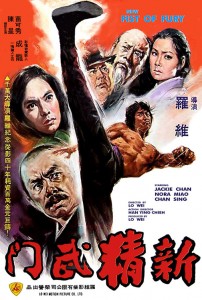
“New Fist of Fury” Chinese Theatrical Poster
Director: Lo Wei
Cast: Jackie Chan, Nora Miao, Chan Sing, Yim Chung, Lo Wei, Han Ying Chieh, Chiang Kam, Luk Yat Lung, Hon Siu, Lau Ming, Chan Jan, Suen Lam, Cheng Siu Siu, Liu Ping
Running Time: 120 min.
By Joseph Kuby
New Fist of Fury is also known as Fists To Fight.
People refer to this as his first starring role when, in fact, it’s actually his first complete starring role. His first starring role was in The Little Tiger of Canton (or Cub Tiger From Kwan Tong though released internationally as Master With Cracked Fingers) but the film was so cheap that the film never got finished until after Jackie became a superstar with Drunken Master and some shifty producer hired a Chan lookalike and various actors to finish the film.
This ain’t as bad as many others have made it out to be but it’s not an entirely successful effort either.
Jackie is not as charismatic as he is in later films which really doesn’t help. His lack of charisma and screen presence stems from the fact that New Fist of Fury was made before Jackie had an eye operation (among other things like an operation to fix his teeth). More on this later though.
The attempts to mimick Bruce’s Tai Chi movements (or circular arms of death) from the finale of Fist of Fury is ropey to say the least.
According to Jackie, his character Ah Lung is meant to be the brother of Chen Zhen, but I couldn’t spot the connection. He’s a totally independent character who doesn’t bring up his brother in conversation throughout the duration of the entire film. A point is made that he has a mother he’s not aware of (who works as a whore for the villain Akumora as played by Chen Sing) yet we don’t see how Chen Zhen became separated from his family. Chinese Connection 2 my ass!
Heck, even Fist of Fury 2 was a better sequel. You know something’s wrong when you find yourself thinking that A Better Tomorrow 2 comes off as a more coherent and less contrived sequel in comparison!
For all of Lo’s attempts to maintain some kind of consistency, we don’t get to see the other survivors from the Ching Wu school besides Nora Miao’s character; though we’re meant to assume that Chiang Kam (Sammo’s brother in Magnificent Butcher) is playing the stocky comic-relief Ching Wu student Lee Kwan played in the original Fist of Fury.
The scenes involving Nora’a grandfather, Master Su of the Taiwan Ching Wu school, are riddled with moments of awkwardness that detaches one from the mood eerily established from the opening shots. When he gives this speech during a birthday party, we hear this high-pitched voice that presumably belongs to this Chinese opera singer who’s screeching and whining in the background. Speaking of Chinese opera, there’s a scene where Master Su is attending a stage performance when all of a sudden one of the performers (playing real-life hero General Kwan) is attacked by a Japanese, propelling Su (quite literally too) to leap from the back of the audience to the stage where he fights for a few seconds and then dies, standing erect with his eyes open. Apparently he died from instantaneous full-body rigormortis!
There’s also a Japanese general in the film, played by Suen Lam. His role looks like outtakes from Michael Hui’s classic comedy The Warlord.
The movie is a bit cliche, not because the story is by-the-numbers in a child-like join-the-dot fashion but mostly because of the dialogue as there’s a dozen “but still”s and half a dozen “well now”s.
New Fist of Fury is a good example of Han Ying Chieh (a.k.a. Hon Ying Git if you can’t pronounce Chieh) as an action director and I don’t mean that as a compliment. We have some hokey stuff you’d see in a Dragon Lee movie, for instance there’s an attempted assassination scene taking place in this sauna where Akumora catches a throwed knife with his teeth and throws it back to one of his many assailants.
With all the problems that plagued this film’s production, it’s a wonder that it’s watchable.
Nora throws in a noble and dignified performance rather than one that reeks of paycheck quality. Most of the actors here do a decent job. Chen Sing performs admirably well and has an domineering presence that threatens to overwhelm Chan, which is a good thing because you need to have a very good villain in a film like this, the sort of villain that makes you believe the would-be heroes would lose.
Many people note that Jackie’s character is a serious lone avenger who’s far removed from the characters he plays in later films. To be honest, he plays the same underdog character though with the humour being more low-key in comparison to something like Spiritual Kung Fu or Fearless Hyena. Jackie still conveys some subtle comic touches which are reminiscent of his later work. One such touch is seen in the finale when Jackie’s back is pressed against a wall and he slides down to hit the villain in the gut – the sort of slapstickery action Jackie would elaborate on in later films.
Jackie is fairly amiable in this flick and I’ve come to see him as sort of a Chinese Tom Hanks, playing these everyman characters who get themselves into hot water.
Though the film’s attempt at patriotism is heavy-handed, the scene where Jackie bites his finger to write something on his chest in the middle of a patriotic speech leaves a momentous image in the mind.
The production values, while looking bare at first, are quite solid. Not as captivating as some of the set design used for Fist of Fury (in terms of intricate detail) but there’s nice usage of mansions as martial arts schools which really helps to give the film it’s much sought-after epic feel, it certainly brings a larger-than-life quality to the proceedings (though the exteriors of the mansions look a bit like centuries-old universities). The mansions look more impressive than the Ching Wu school seen in Fist of Fury.
One thing I appreciated about this film was that Jackie’s character wasn’t someone who was a martial arts expert straight-from-the-bat, he starts off as a lowly thug who fights in a sloppy street fighting style before training in the martial arts.
Although I never thought Lo Wei was a great director, at best he was a good director, someone capable of directing scenes of a dark nature (like what Bey said in his commentaries, Lo could have been a successful horror/thriller director). Here, Lo shows patience when it comes to setting up the story and developing the characters (even if the pace does plod a bit) rather than just having a fight scene take place every five minutes.
I liked the addition of the Japanese femme fatale (as played by Cheng Siu Siu a.k.a. Jeng Sau Sau). She’s not as intimidating or sexy looking as Yukari Oshima (much less Michiko Nishiwaki), but she comes close and gets the job done efficiently. Some of the best fight scenes in the movie are due to her mastery of the fighting arts.
Another thing I appreciated about this film was that the filmmakers didn’t try to cop-out for the sake of political correctness by having Jeng and Chan not go toe-to-toe, which would have been one-sided. It’s atypical for Chan to fight women in his films so it was a nice touch to what could have been a predictable film, though be warned it doesn’t match the greatness of the final fight in Armour of God where Jackie takes on a quartet of Amazonian women.
If there’s anything frustrating or teeth-gratingly annoying about this movie, it’s that we never get to see Nora Miao and Jeng Sau Sau fight!! WHAT THE HELL??!!
If this was directed by Sammo Hung or any other director who had more than two brain cells in his or her head, then we would have had Nora & Jeng going at it! (not in the same way you horny hounds are thinking of, hehe)
Nitpicking aside, Korean kicker Kwan Yung Moon (the muscular tyrant in Lau Kar Leung’s {or Liu Chia Liang’s} My Young Auntie) is in this. He would go on to be the villain in Jackie’s films Fearless Hyena 2, Dragon Lord and Project A. He’s done better than this flick though, he never uses his skills to a high degree as he does in Return To The 36th Chamber, Kung Fu Zombie, Fighting Ace, The Loot, Shaolin Plot, The Dead & The Deadly, Ninja In The Dragon’s Den and Hell’z Windstaff.
It’s clear that Jackie had an involvement in some of the fight sequences, exceptionally the scenes involving his usage of the three sectional staff (a weapon that’s sorely underused in cinema) which he then uses as a nunchaku during the final fight against Chen Sing, who adopts the usage of sai knives (Japanese daggers). Though it’s not really saying much, his clash against Sing is the best fight in the film and it was nice seeing two famous stars of the genre go head-to-head.
Watching this film for the second time in seven years was a relevation for me as the previous UK (VHS) version was cut by three minutes so I never got to see Jackie swing the nunchuks (not the makeshift one Jackie uses in the final reel).
Hon Ying Git does some impressive moves with the sort of capability which far exceeds people of his age – he looks better here than he does in The Big Boss, where he looked effective playing as Bruce’s arch nemesis.
Not one of Chan’s best efforts. It’s definately his worst film with Lo Wei, though he’s probably not as miscast here as he was in Lo’s Killer Meteors.
If there was ONE beneficial thing that I got from this flick it’s that Lo Wei had a major influence on the development of Jackie’s rising star as the eye operation he ordered Jackie to undergo would enhance his charisma and allow Jackie to express himself as an actor more vividly and convincingly, becoming more of an animated actor whose emotions would translate to worldwide audiences. Think about it, without Lo, Jackie would never have become that big of a star if it wasn’t for the operation. Undeniably the best thing Lo Wei did for Jackie, but people usually don’t give it much attention and assume it was because Jackie was younger as to why he looked different.
His films wouldn’t be endurable to sit through if he didn’t have that level of charisma that Lo’s financed operation afforded him. A lot of the appeal for Chan’s films stems from the universal quality of the characters he plays and the way he acts, so watching New Fist of Fury made me appreciate Lo Wei’s involvement in Chan’s film career.
Something to contemplate when thinking about his entire film career.
History of Production
Jackie was working in Canberry, Australia (as a construction worker and kitchen assistant in a local Chinese restaurant, whilst living with his parents) after being disillusioned with the amount of work he was getting in Hong Kong. He was still in correspondence with certain people in Hong Kong (like Sammo and Biao) to let him know that he moved. Among these correspondents was Willie Chan (his future manager) who gave Jackie his business card after seeing Jackie perform as Mr. Suzuki’s stunt double for the final death blow Bruce Lee delivers in Fist of Fury.
When Jackie was working in Australia, Willie had just left Cathay to work as a general manager at a then-new production company formed by the millionaire director Lo Wei (a.k.a. William Lowe). After Bruce’s tragic death, the martial arts film industry had suffered greatly and only so much stuntmen could be hired for films (leaving a fair amount of stuntmen to end up on the streets – usually having to work for Triads). Luckily for Lo, he had enough of a reputation to land on his feet, going into business on his own (though Lo Wei was once believed by most to be a high-ranking member of the Sun Yi On Triad which, according to authorities, has 45,000 members).
Whilst Lo Wei had done plenty of movies after Bruce’s demise, the closest thing to a big hit (or anything as big as Bruce’s movies) was Back Alley Princess – a romantic action comedy starring Angela Mao Ying, Polly Shang Kwan, Sam & Michael Hui (minus Ricky, who can be seen in Project A 2 as one of the police officers who gets the wrong impression of Chan which results in a fight scene where Ricky ends up having a dirty face). Back Alley Princess was so successful (Polly won Golden Horse award for best actress) that there was a sequel shot in San Franciso (and it contained a black face gag courtesy of Sam and Polly which is less justified and more tasteless than what Sammo did in Enter The Fat Dragon). The sequel has three alternate titles – Chinatown Capers, Chinese Enforcers and Back Alley Princess in Chinatown.
However, his first big project was going to be a remake of Fist of Fury, his most successful film ever, with Lo & Angela bringing back their roles and with Hon Ying Git brought back as the fight co-ordinator. Regardless of the well-intended consistency (a surprise given the nature of “in-name-only” sequels in Hong Kong, especially during the exploitative era of the 70s), the problem was that the original was successful for one reason, and one reason only – Bruce Lee – and no other action star was big enough at the time to step into Siu Lung’s shoes. No one could convince Lo that this was true as he presumed that any half-decent fighter could be successfully plugged into the lead role.
The first step towards casting Chan was actually a telegram that came while Jackie was plodding along a typical day’s work down under. After arriving home exhausted, as per usual, Jackie read a telegram which stated that Willie had wanted to give him a call about a job. The originating address of the telegram was Lo Wei Productions, Ltd.
At that time, Jackie was known as Yuen Lung. The name is what Sammo was using at Yu Jim-Yuen’s peking opera school before he got into the movies, but since Sammo wasn’t referred to as Yuen Lung anymore Jackie swiped it.
As to the origins of the Jackie name, Jacky was the name given to him by the construction workers he was working with (at first he was called Little Jack by a similarly named construction worker who was later referred to as Big Jack). Jackie’s original anglo name was Paul (an anglicized if slang variation on his name Ah Pao or Pao-Pao, which means cannonball due to how heavy he weighed when he was born). Paul was a name given to him by the English-speaking staff of the Australian embassy his parents were working for. The name Jacky stuck for his films with Lo Wei until he worked with Golden Harvest who decided to make his name even more anglicized, hence Jackie.
Anyhoo, back to Willie’s casting directorial duties, he was keen to know as to whether Jackie was available. Jackie didn’t want to come off as being a typical “trying-so-hard-to-be-famous-wannabe” so he claimed he retired from the industry (which was half true) before Willie retorted that Jackie was too young to retire. When Jackie was told what the project was, his reaction was a mixed bag. Conflictingly, Jackie didn’t want to stand in Bruce’s shadow but working on a remake of Lee’s blockbuster hit (that struck the biggest chord with local audiences) sounded like a terrific opportunity.
Jackie was also baffled as to why they would want someone from overseas (perhaps because all of the leading lights were unavailable or uninterested). Not wanting to come off as desperate, Chan agreed to do it if the money was right but Willie countered that they could only pay him HK$ 3000 (US$ 400) per month with an extra HK$ 3000 at the completion of each movie (which was meagre in comparison to the US$ 1000 per month Jackie was making with his then current two jobs); Willie reasoned that the salary was fair seeing as how they were taking a risk casting an unknown actor as the lead. It was the company’s first gig among other things too! As a bonus, Jackie would be promised to be given a plane ticket to go to Hong Kong (with shooting starting two weeks after they spoke on the phone).
After juggling, in his head, the two bleak possibilities of whether he could survive in Hong Kong on that kind of money or if he should dedicate the rest of his life in Australia peeling vegetables, Jackie decided that he’d figure out what to do about money when it became a problem and at least he could quit his lousy job at the restaurant (he particularly enjoyed the prospect of telling his boss to shove the vegetables up where the sun doesn’t shine – I wonder if the chef was as bad as infamous UK celebrity chef Gordon Ramsey).
Pre-Production
Willie’s perceptions of this project was that it would be “very big, enormous” whilst admitting to Lo that Jackie’s not what you’d call good-looking. One prospect Willie had envisioned was that New Fist of Fury would be taken to Cannes for international distribution. Despite Lo’s company only existing for three weeks, Jackie was assured the company had phenomenal potential. This, in spite of the fact that other than Lo Wei as marquee director and producer, the full-time staff consisted of Willie – who was hired as general manager a week before Jackie arrived – and a few administrative personnel. Everyone else in the company’s small Kowloon offices was a contract worker, hired on a project-by-project basis or signed to a short-term deal. Willie acknowledged the company’s miniscule budget, admitting that they weren’t quite working with top-of-the-line facilities.
One of the producers for the film was Jimmy Shaw though he’s credited under the more formal James. He was the producer who spotted James Ho and produced Fist of Fury 2, Bruce Lee Against Supermen and Exit The Dragon Enter The Tiger with Ho as the lead.
Jackie had contrasting thoughts about working with Lo Wei, he’d seen how Bruce & Lo were like chalk & cheese (quite fittingly put too) on the set of Fist of Fury, but he was also a bit starstruck at the idea of working with a filmmaker who had played such an important role in Hong Kong’s cinematic history.
Though it was referred to as a remake by the makers of the film in that it was a completely new story, it was also perceived as a sequel in that the story followed on from the original with Nora Miao’s character maintaining that consistency. Lo wanted Jackie’s name to be similar to Bruce’s, one that gave him a firm standing lifting him above other genre stars. After several possible screen names contemplated, Willie chimed in with Sing Lung (which means “already a dragon”) which is why Jackie is known as Chan Sing Lung.
Principal Photography
Any trepid feelings Jackie had about filling in Bruce Lee’s shoes were momentarily erased as he was filled with excitement when shooting began on New Fist of Fury. He woke up early, ate a big breakfast and nearly ran over to the set. Willie (who was the executive producer of the film) was already there, deep in discusiion with the director of photography. Lo, of course, wouldn’t get there until much later in the morning. There seemed to have been some agitation in Willie’s usually serene features so Jackie trotted up to him to find out what was wrong. Apparently, Hon Yin Git had suffered an accident which brought up concern as to whether they should hold up production to find a new stunt co-ordinator. Jackie stepped in and his pay salary was raised to HK$ 9000 (US$ 1160 and 57 cents). Willie reasoned that since Jackie was a rookie actor but an experienced stunt co-ordinator, the fee was fair.
If anything good was to come out of the movie it would be that Jackie became friends with Nora Miao, who he described as beautiful and very kind. Jackie had worked with actresses before, some very big names (whether they be devilish divas, pretentious prima donnas or sweet starlets), but New Fist of Fury marked the first time Jackie had worked with a star as a peer. Nora was gracious enough to help him with his lines and was very easy to work with when it came to the action scenes (no complaints of not having the right complimentary angles or broken nails here). Admittedly, she wasn’t a martial artist but she was willing, flexible, athletic and she carried off her fight sequences quite gracefully.
Jackie, on the other hand, felt he was awkward and stiff as an actor. Though Jackie did have previous acting experience before (like a somewhat decent supporting role in John Woo’s Hand of Death), part of the problem concerning his thespianmanship was his discomfort with the role he was expected to play – intense and angry, a screaming demon with a heart full of vengeance. Lo obviously wanted Jackie to be the new Bruce and it went against Jackie’s whole personality. The experience became frustrating and Jackie knew he wasn’t living up to his full potential.
Working with Lo Wei day by day was turning into a grueling experience, not just for Jackie but for everyone involved. From the moment Lo arrived on set, fury was unleashed onto anyone within an inch of his radius. He was always seen to be in a nasty mood, screaming at everyone within earshot, even driving poor Nora to the brink of tears with one of his tirades (Heck, not even Wong Jing is like this {my attempt to show that Jing is not a hack like Wei} as Jing is usually in a happy, overly jovial mood on set so as to ensure relaxation from the people he’s working with and to increase the level of enthusiasm {and thus the work ethic} of the people he’s working with).
After several hours of throwing tantrums, Lo left the set in a rage, ordering the cinematographer to finish the day’s shooting by himself. Most of the afternoon’s shots were fight scenes anyway, so JC found himself in the unusual position of serving as action & acting director, suggesting set-ups and camera positions to the bemused D.P. (director of photography). Even Willie acknowledged the dire situation to Jackie when they were at a quiet local bar, drinking beer and trying to release the tensions of the day. Willie told Jackie that the Bruceploitation scenario wasn’t just happening in Hong Kong but all over Asia as producers travelled to Korea, Malaysia, China, everywhere – telling people, “Hello, you look a little bit like Bruce Lee; come on, I’ll sign you up.”
That day also marks a turning point for the two Chans as Willie observed Jackie’s take on the situation (and a hint of his newfound soon-to-be-developed niche persona), as Chan mocked the imitators, leaping off his stool and striking a mock ferocious pose “Here comes the new martial arts hero, Bruce Liu! I mean Bruce Lai! Bruce Leung!” all whilst hopping from foot to foot, shadow-boxing and pulling shapes before proclaiming “Bruce Table! Bruce Lamp! Bruce Chair!” Shouting a bloodcurling war cry ala Lee, Jackie slammed his fist down on the bar, then faked a scream of pain, shaking his hand in mock agony (the prototypical example of JC’s style of action that he would use for the umpteenth in interviews aplenty). Stumbling backward, he fell into his chair, tipped it over, and rolled into an upsidedown position, then stood up holding the seat of his pants as if he’d ripped them (a gag he’d used in Drunken Master) as he conveyed a mock embarrassed expression on his face.
Then, as if nothing happened at all, Jackie sat back at the bar and drained his drink. Willie, who’d looked shocked when Jackie began his antics, was now laughing and applauding silently.
Post Production
Lo was so angry there wasn’t even a wrap-up party to celebrate the completion of the film.
Instead he concentrated on getting the film edited and released in cinemas as soon as possible, so as to reach the deadline for the film’s release on the 7th August 1976 (it was perceived that the summer season would guarantee at least enough success to cover costs).
Editing the film was no problem though there was concern that the film was long (almost breaking the two hour limit) and that the pacing of the film didn’t allow for enough fights. Lo balked at anyone else’s suggestions and retorted “If people want nothing but fights they can watch boxing matches, a film has to have narrative and character development – it can’t be fighting all the time!”
There had been dilemmas as to which characters should be focused on, particularly whether the film should be centred around Jackie or around Nora. On one hand, Nora is Bruce’s girlfriend from Fist of Fury and people watching this movie would be watching it for the Fist of Fury connection. On the other hand, there was Chan’s character who (in both the storyline of the film and behind the scenes) was being set up as the next Bruce Lee.
Lo decided to place equal emphasis on both hence the running time for the film.
Distribution & Exhibition
Lo Wei had a hard time getting this film released in cinemas without the scornful and scrutinizing eye of the critics. The trailers advertising Jackie as the new Bruce did nothing to pull back people’s derisive nature towards the film.
Even though Lo was a big name (as was Nora Miao and Chen Sing), the Hong Kong movie distributors were weary of Chan and didn’t think the public would except him due to him not being as charismatic as the other stars of the time.
Wei had a hard time securing distribution in Japan as the audiences loved Bruce Lee over there (even moreso than Hong Kong audiences as seen if one was to view the box office statistics of Bruce’s film releases in Japan – their success on TV & home video releases go through the roof). The distributors told Lo that the audiences would be cynical of Chan and very few would accept any exploitative imitation of Bruce Lee (bar Enter The Fat Dragon of course, which made lots of money in Japan) unless the film was of a very high quality, something the distributor thought New Fist of Fury lacked. So the film was never released theatrically in Japan.
There’s a certain irony to be found here as even James Ho’s efforts were getting distribution in Japan due to the fact that they were either perceived as documentaries or films which went outside the genre (take for instance Interpol, The Three Avengers, Bruce Li in New Guinea or Soul Brothers of Kung Fu) with the exception of Bruce Lee Against Supermen which (despite ever-so-slight nods to the Kato character which Bruce immortalized in the Green Hornet series) became something of a cult classic in Japan.
An even bigger irony is that whilst Jackie continued to churn out paltry potboilers for Lo, which weren’t making much money in Hong Kong, he was getting secured distribution in Japan since each newer film from the two moved away further from the Bruceploitation genre. Again, Magnificent Bodyguards was the exception as the film was denied theatrical distribution because the film’s score borrowed from that of Star Wars, which became a part of the Japanese public’s lives (Star Wars producer Gary Kurtz attended a screening of the film in Japan and noted that the audience liked Star Wars so much that there was complete silence – at first he thought it was a flop until a Japanese businessman told him otherwise).
So if Magnificent Bodyguards had been released in theaters at that time, chances of derogative backlash would have been high and would have potentially furthered Jackie into obscure oblivion as far as the consciousness of the Japanese audiences were concerned.
But back to New Fist of Fury, Jackie & Wei were sitting in the office of Lo Wei Productions, Ltd.
The offices based there consisted of a few tables with beat-up phones which were scattered around the front of the room. A middle-aged receptionist would usually be seen sitting at one of them, reading a wrinkled newspaper. The walls were decorated with posters from movies made during Lo’s golden days (surprisingly none of the posters featured Bruce). At the far end of the room there was a folding screen which blocked off a sort of open-air office (Lo’s office) and usually a thick fog of smoke from behind the screen turned the sunlight streaming through the dirty windows into a hazy shade of blue. Jackie revealed that when he first entered the company there was open space that might have been a converted storage loft, and probably was.
Anyway, Jackie and Wei were as nervous as Bruce and Raymond was prior to seeing people’s reactions to The Big Boss.
Their nerves were on edge, waiting for Willie to arrive with the box office returns. Lo was puffing madly away on one of his infernal cigars (and this guy died of heart failure?!). Jackie was briskly sweeping the office floor with an old straw broom, working off his own anxiety. It wasn’t his job, nor did he do it out of Lo’s request, but he did it out of habit (something Jackie does even now when he’s present at his own headquarters and when no-one’s looking).
By the time Jackie finished sweeping and emptied the waste baskets, Willie had arrived with some morbid news. After throwing his coat onto a chair and expressing a feeling of disappointment on his face, Lo demanded why Willie was wearing a frown on his face and said “Don’t just stand there like a fool; give us the news!”, Willie quoted a figure that sent Lo flying into a fit. “You gotta be kidding me,” Wei said. Willie stared at Lo without blinking, until the director finally tossed his cigar butt into the nearby trash can (which Jackie had previously emptied) and stomped the door, slamming the door behind him, before going down stairs.
Jackie had already experienced this kind of problem before with previous films (minus Hand of Death) and told Willie that his luck hadn’t changed and he might as well return to Australia before Lo Wei’s budding film company goes bankrupt. Willie reassured him that things will be fine despite Lo’s little tantrum, especially if they make the film’s cost back in Southeast Asia (Willie has mentioned numerous times in the past that he has been very good at being in charge of sales).
Arguably, Willie must have succeeded at his claim of recuperating the costs because Lo was able to make nine more films with Chan.
As for Cannes, well… let’s just say that international (i.e. non Asian) distributors attending the festivals weren’t particularly eager to pick up the film for release. Whilst Lo’s name (or rather his association with Bruce Lee) was big enough to secure a showing at the Cannes film festival in 1977, it was coldly received despite critics acknowledging that it had more plot development than the average Kung Fu movie. The French title for the film is La Nouvelle Fureur De Vaincre (New Fury To Overcome).
After that, the film was relegated to grindhouse and drive-in movie theaters!
Joseph Kuby’s Rating: 6/10
By Numskull
Our story begins After the Chinese Connection,
A mistitled release Under Lo Wei’s direction.
A gaggle of gunmen Ventilated Bruce Lee.
(You think that’s bad? Imagine the autopsy!)
So three people from Shanghai, Two bros and a sis,
Decide to get even, Cuz revenge is sweet bliss.
The three have a grampa Who’s a big rebel cheese.
“Can we join the rebellion, Please grampa please?”
They arrive in Taiwan Where those Japs have a perch.
They’re looking for rebels, And if need be they’ll strip search!
That’s bad enough, But what REALLY sucks
Is that Jackie the thief Swipes Bruce Lee’s nunchucks!
So when they find him lying Half dead in a ditch,
They say: “Give ’em back, You son of a bitch!”
His dad is a loser And his mom is a whore,
And he won’t learn kung fu Cuz he says it’s a bore.
Still, Jackie’s invited To a big birthday bash.
Grampa is now eighty (“When he croaks, we’ll get cash!”)
The celebration commences, Then Nakamura walks in.
He’s at war with our heroes And determined to win!
Nakamura won’t rest Until all kung fu schools
Change their names to his And play by his rules!
Grampa is furious At his lack of class.
“You dare crash my party? I’ll kick Japanese ass!”
But then his heart fails And no one knows CPR
(Why must good guys die? For this course, it’s par…).
The siblings want justice! They re-open the school
But they’re given trouble By some traitorous fool.
He tells Nakamura That this school said words
That degraded Japan (Those miserable turds!).
They need a great fighter To repel the Japs’ raid,
So they drag in Jackie And say “Lend us your aid!”
He replies: “What could make you Expect that of ME?
I’m just a thief, ma’am… I ain’t no Bruce Lee!”
Then Nakamura shows up And crosses the line…
He has his bitch-daughter Smash up their sign!
Now Jackie is ripped! He trains long and hard.
As a top kung fu student, He’ll be their Trump card.
Then, early one morning, The Japs must hunt rebels.
“No time for breakfast? I need Fruity Pebbles!”
When our heroes are questioned, They all say: “Who, me?”
While Jackie’s old pop Helps the real rebels flee.
That’s the last straw! Nakamura is pissed!
(The upcoming fight scene Is not to be missed!)
“Kung fu school leaders, Come to my place,
So I can lay down the law And close this damn case!
You Chinese weaklings, I give you a choice:
Submit to my whims, Or protest with your voice.
But be ready to fight If you go for the latter…
My top two students Will have your head on a platter!
Some guy takes them on, But he doesn’t last long –
The Japs kick his ass Cuz he’s not very strong.
Fat boy to the rescue! Into battle he leaps!
He’s fighting for freedom! He’s playing for keeps!
Then the guy with the mustache Saves his overweight butt,
And then must do battle With that Japanese slut!
The bitch does him in And it’s looking bad,
Until Jackie steps in– What a virtuous lad!
He emerges victorious! Nakamura’s in shock!
He screams at young Jackie! His reply? “SUCK MY (Charms blow-pop.)
Nakamura cuts loose! They fight tooth and nail!
But Jackie looks tired– Will evil prevail?
The villainous Japs Have a trick up their sleeves…
If Jackie’s the winner, He’ll be shot as he leaves!
He gets knocked downstairs And faces some guys Whose swords save them not
— They’re swatted like flies! Nakamura won’t stop!
He smacks Jackie around!
Our hero falls next to A sword on the ground!
His feet seize the blade! “Enough of this shit!!”
He skewers the Jap Like a pig on a spit!!!
Nakamura is dead! The rebels all cheer!
And then Jackie’s voice Is heard loud and clear:
“Come, Chinese people! There’s no time to delay!
We must all step outside And get blown away!”
This movie can drag At two hours long,
But it’s still pretty good, Don’t get me wrong.
It’s well worth the wait For the last of the fighting,
And here’s where I stop Cuz I’m tired of writing!
Numskull’s Rating: 6/10

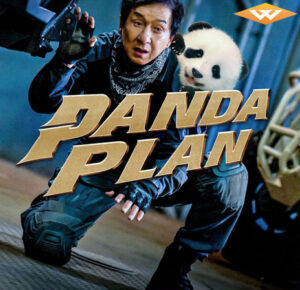
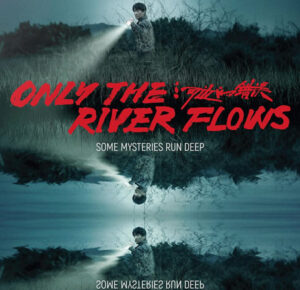


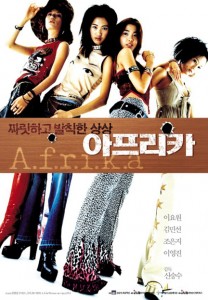
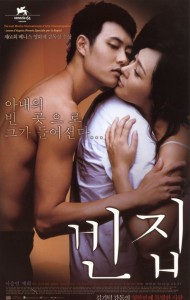
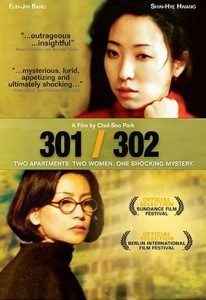
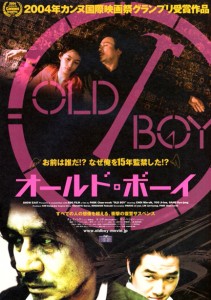
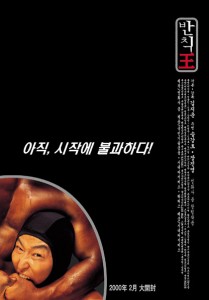
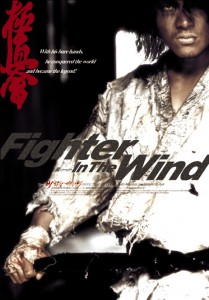
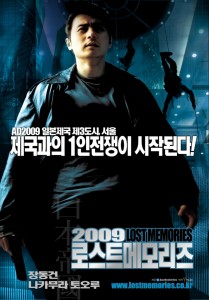
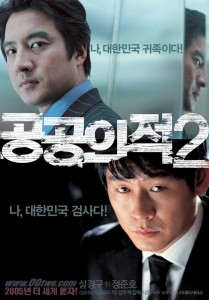
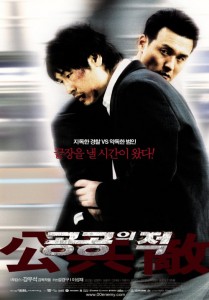
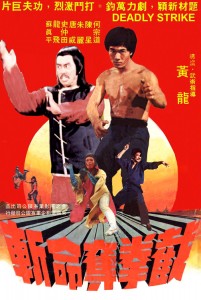
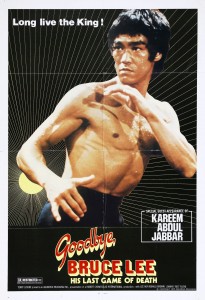
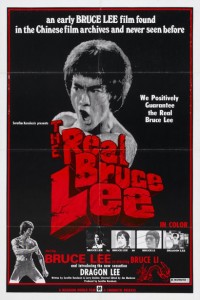
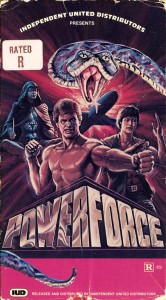

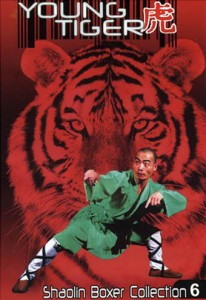



Be the 1st to Comment